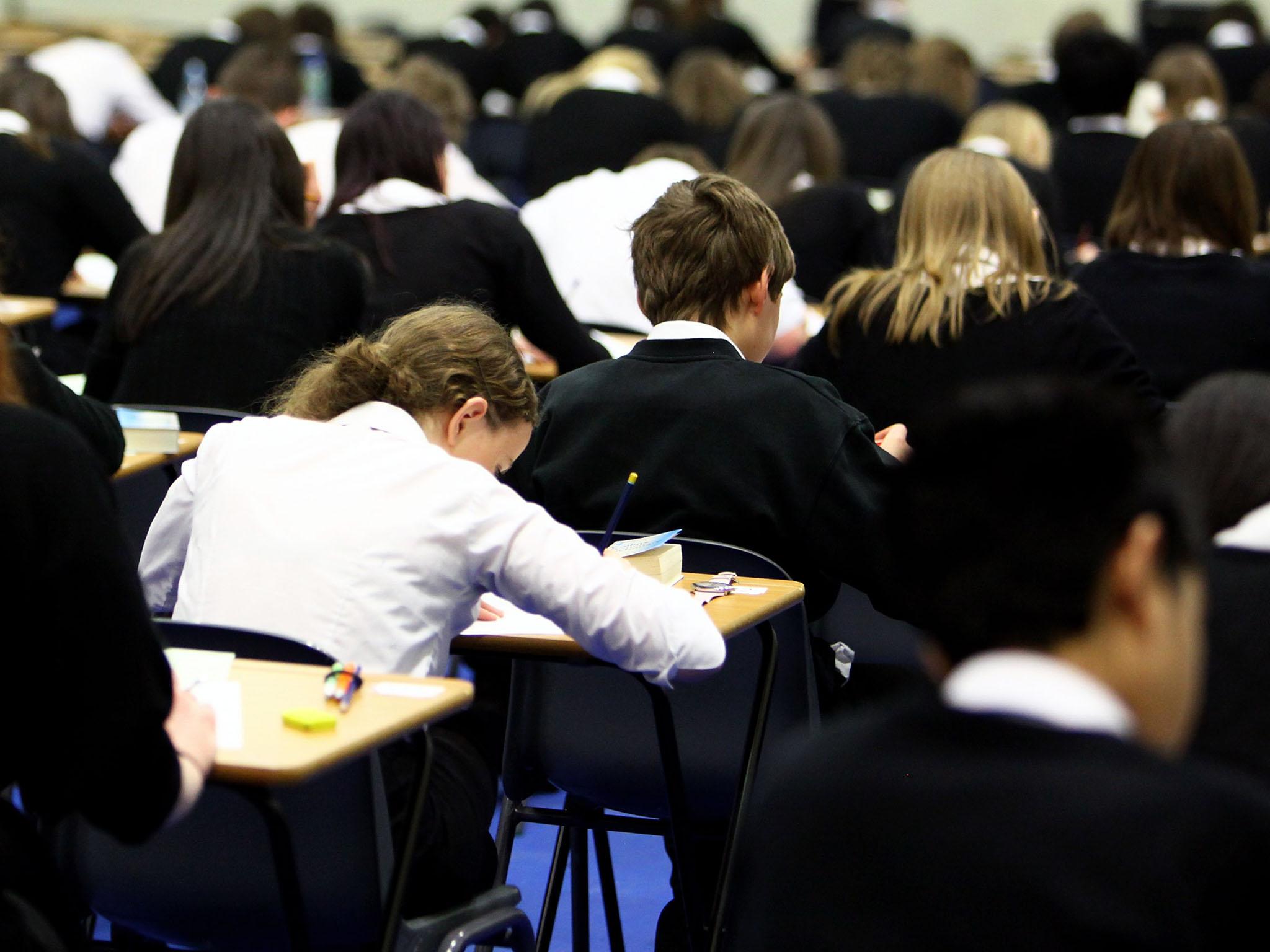England has one of the biggest gaps between high and low performing pupils across developed world
Difference between highest and lowest performing pupils in English schools is 18.6 points, compared to 16.2 points for top-performing nations, report finds

Your support helps us to tell the story
From reproductive rights to climate change to Big Tech, The Independent is on the ground when the story is developing. Whether it's investigating the financials of Elon Musk's pro-Trump PAC or producing our latest documentary, 'The A Word', which shines a light on the American women fighting for reproductive rights, we know how important it is to parse out the facts from the messaging.
At such a critical moment in US history, we need reporters on the ground. Your donation allows us to keep sending journalists to speak to both sides of the story.
The Independent is trusted by Americans across the entire political spectrum. And unlike many other quality news outlets, we choose not to lock Americans out of our reporting and analysis with paywalls. We believe quality journalism should be available to everyone, paid for by those who can afford it.
Your support makes all the difference.England has one of the largest gaps between high and low performing primary school pupils across the developed world, a damning report has found.
New analysis showed England is failing to keep pace with other wealthy countries when it comes to maths education for 11-year-olds, with every local authority across the nation missing a key benchmark.
The huge disparities in maths education for primary–aged pupils are laid bare in a report by the Education Policy Institute (EPI) and UCL’s Institute of Education, which found the brightest students in England continue to do well while low achievers are falling behind.
Among top-performing nations, 90 per cent of pupils meet the government standard in Key Stage 2 (KS2) maths by the end of primary school.
But last year just 75 per cent of pupils in England met that benchmark.
An estimated 90,000 pupils would need to dramatically improve their performance in order to match comparable countries such as South Korea and Singapore.
The report, English Education: World Class in Primary?, converted results from 56 different countries into equivalent English KS2 assessment results, producing an estimate of where England stands in the world in primary education.
Natalie Perera, EPI’s executive director, warned that England had “some way to go in order to match the highest performing countries”.
She said the “huge gulf” between England’s top performing primary pupils and those lagging behind at the bottom were “cause for concern”.
Last month the Chancellor, Philip Hammond, promised £600 for every A-level maths student as well as moves to boost teacher training in underperforming schools.
But critics said the announcement amounted to a “drop in the ocean” given the scale of cuts since 2010.
In Bedford, the lowest performing area identified by the report, just 60 per cent of pupils met the government benchmark.
London dominates the top performers, with 17 of the 20 highest ranking local authorities in the capital.
Northern Ireland performed better in maths than England, with around 80 per cent of pupils reaching a world-class standard.
Kevin Courtney, of the National Education Union, said primary schools in England were “hampered by a narrow and test-driven curriculum, which overworks teachers and damages the classroom experience of children”.
Key Stage 2 tests (also known as Sats) are taken by 11-year-olds across England, with pupils given a scaled score. To reach the expected standard, a pupil's score must be at least 100.
Researchers estimated that the average score of the top-performing nations is 107, compared to 104 in England.
It goes on to conclude the difference between the highest and lowest performing pupils in England is around 18.6 points, compared to 16.2 points for the top-performing nations and economies.
Sir Kevan Collins, of the Education Endowment Foundation, said more to support for pupils from disadvantaged homes was needed.
“Leaving school with good maths skills is a prerequisite for progressing into quality jobs, apprenticeships, and further education, so it is seriously concerning that England’s ‘long tail’ of low achievement is already evident by the end of primary school,” he said.
Join our commenting forum
Join thought-provoking conversations, follow other Independent readers and see their replies
Comments